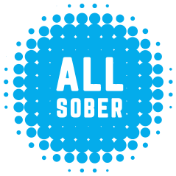Addiction: The Hijacker
The Addiction Policy Forum explains how substance use can hijack the brain, making it think that the substance is the most important thing for survival
In Episode 1 of the series “Addiction” — “The Hijacker” — learn about how substance use disorders (SUDs) affect tissue function in two main parts of the brain: the limbic system (responsible for basic survival instincts) and the prefrontal cortex (where decision-making and impulse control live). Substance use activates the dopamine process in the survival center much more powerfully than natural rewards like food or sex.
When repeated it can hijack the brain, making it think that the substance is the most important thing for survival. Over time, more and more of the substance is needed to activate the same level of reward, causing the brain’s circuits to become increasingly imbalanced — eroding a person’s self-control and ability to make sound decisions, while producing intense impulses to seek and use the substance. This is what it means when scientists say that addiction is a brain disease.
The good news — SUDs are preventable and treatable, and brain scans show that once an individual is in recovery, brain tissue can get better.
Source and credits: Animated by Patrick Smith. Produced by the Addiction Policy Forum. Written by Maureen Boyle, Ph.D., Braeden Kelly, Jessica Hulsey Nickel and Lisbet Hope Portman. Credit to the National Institute on Drug Abuse (NIDA) for the science highlighted.
More Help & Information
Sobriety vs. Recovery: What's the Difference?
Are the concepts themselves up for debate? Do they require certain treatments, or abstinence from everything? It's complicated! And new ways of thinking are changing the conversation.
Now Elite NFL Players, They First Tackled Addiction | News Roundup
All Sober compiles the best of the latest headlines. Here's your addiction and recovery news for the week of Feb. 19, 2024!
Help Them Help You: Explaining Your Mental Health to Your Family
Your mental health can affect — and be affected by — your loved ones. Here's how to discuss it with them so everyone can heal.
Dry January (and Beyond): The Possibilities Are Endless
There's never been a better time to go sober. Whether you're trying it out this month or already living the life, join us for some tips, ideas, inspiration — and maybe even new friends.
Sober Holiday Tips: Meeting 'Share-a-Thons'
Need to get out of the house for a bit and see some friendly sober faces? Recovery support group meeting marathons run 24/7 from Christmas Eve through New Year's Day.
What Happens After an Intervention?
Your loved one agreed to get treatment for addiction during their intervention — or not. Here's what you need to know about what comes next.
We're in This Together: Building a Healthy Sober Support Network
You are the captain of your recovery, but you don't have to do it alone. A sober support network will lift you up in tough times and celebrate your triumphs.
Real-Life Recovery Tips: Phone a Friend
When you're traveling, you can take your sober support network with you — right in your pocket. Rocker Kasim Sulton shares his top recovery tip in this video.











